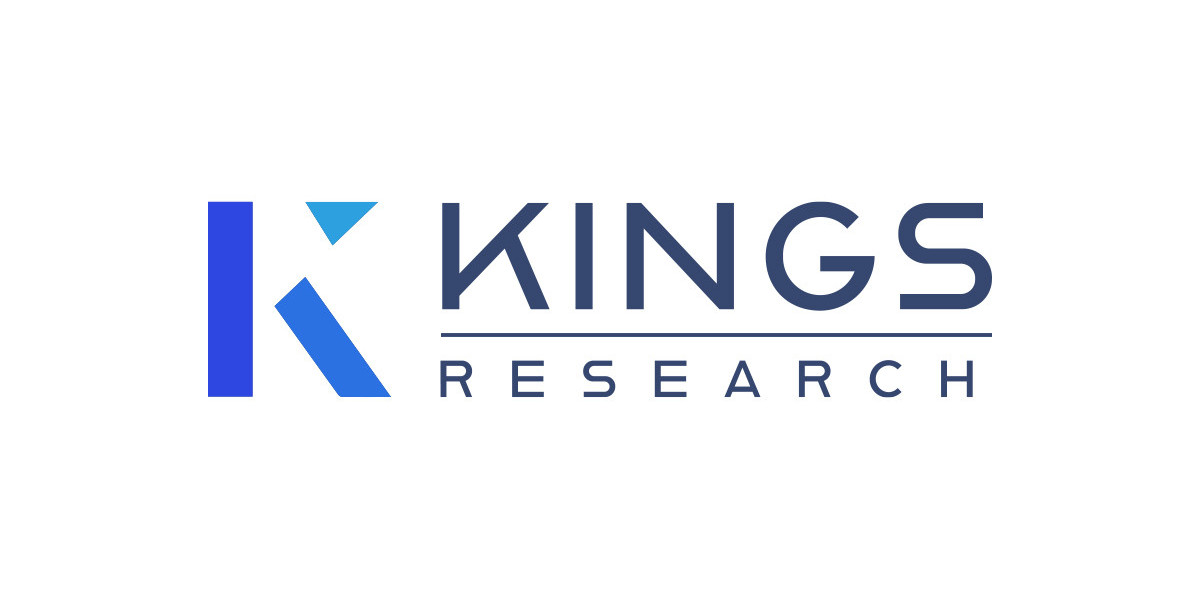Market Overview
The global paint protection film market is entering a period of robust growth, driven by rising demand for automotive surface protection, innovations in film materials, and increasing consumer awareness of vehicle maintenance. In 2024, the market was valued at approximately USD 387.8 million. Looking ahead, forecasts estimate a rise to USD 414.2 million in 2025, climbing steadily to USD 692.6 million by 2032, corresponding to a compound annual growth rate (CAGR) of about 7.39 % during 2025–2032.
Paint protection films are thin, transparent or translucent polymer films, typically made of thermoplastic polyurethane (TPU), polyvinyl chloride (PVC) or other specialized polymers, that are applied to vehicle exteriors and other surfaces to guard against scratches, stone chips, stains, UV degradation, and chemical attack. These films are often engineered with self-healing capabilities, hydrophobic surfaces, and anti-yellowing features, making them a premium add-on for aesthetic and protective purposes.
While the automotive sector remains the largest application segment, PPF solutions also serve electronics, aerospace, industrial equipment, and construction surfaces. The market’s expansion is underpinned by global trends in vehicle ownership, growing aftermarket penetration, OEM partnerships, and the pursuit of long-term cost savings and value retention for high-end vehicles.
Market Drivers, Challenges, and Trend Dynamics
Key Drivers
Rising Global Vehicle Production & Ownership
As global vehicle production continues to expand, especially in emerging markets, more vehicles require surface protection. This stimulates demand for PPF both in the OEM and aftermarket segments. Forward integration by automakers with protective film suppliers also helps raise awareness and adoption.Aftermarket Awareness & Resale Value Preservation
Vehicle owners, particularly of premium and luxury segments, are increasingly willing to invest in protection to maintain aesthetics over the vehicle’s life, reduce maintenance costs, and preserve resale value. PPF provides a compelling proposition in that regard.Technological Innovations: Self-Healing, Hydrophobic, Anti-Yellowing Films
Advances in polymer science have enabled films that can “heal” micro-scratches with heat or over time, repel water and contaminants, and resist yellowing or gloss degradation. Such value-added attributes drive consumer preference toward premium film products.Expansion into New End-Use Segments
Beyond automotive, the extension of PPF into electronics (for device casings, displays), aerospace (aircraft exteriors), and industrial equipment offers diversification and additional demand sources.
Challenges & Restraints
High Costs of Premium Film and Skilled Installation
Quality PPF materials (especially TPU) and expert application demand higher costs, which can deter price-sensitive customers. The requirement for trained labor increases overhead and lengthens payback for small-scale installers.Competition from Alternative Coating Technologies
Ceramic coatings, waxes, sealants, and vinyl wrap have lower entry costs and simpler application, posing substitution risk especially in lower- and mid-tier markets.Material and Environmental Regulations
PPF manufacturers must comply with stringent chemical regulations in different geographies (e.g., restrictions on volatile organic compounds, hazardous substances). Environmental and disposal rules may raise compliance costs.Margins under Pressure & Pricing Volatility
Fluctuations in raw material costs (polyurethane, raw polymers) create uncertainty in pricing. Market entrants may adopt aggressive pricing, compressing margins.
Emerging Trends
OEM Integration & Co-Branding
Automakers increasingly partner or co-brand with PPF manufacturers to offer film protection as factory-installed or dealer retrofit options. This raises consumer trust and reduces aftermarket friction.DIY / Modular Film Kits
Some brands are launching user-friendly, modular PPF kits for do-it-yourself consumers, reducing dependence on custom installers.Green / Sustainable Film Materials
There is growing R&D interest to develop more environmentally friendly film formulations, such as bio-based polymers, recyclable films, or lower-VOC systems.Advanced Surface Functionalization
Films incorporating nanocoatings, anti-fog, anti-static or even embedded sensors may evolve as differentiators in premium segments.Geographic Expansion into Emerging Markets
As automotive demand grows in regions like Southeast Asia, Latin America, and Africa, PPF manufacturers are expanding presence and distribution to capture new markets.
Market Segmentation
By Material
Thermoplastic Polyurethane (TPU)
This is the dominant material segment due to its excellent flexibility, clarity, self-healing capability, resistance to yellowing, and durability under varying temperatures. In 2024, the TPU segment accounted for a substantial share of the market, generating revenue around USD 163.5 million. Its dominance is expected to continue through 2032.Polyvinyl Chloride (PVC)
PVC films are lower cost and easier to manufacture, though they may lag in premium attributes (e.g., long-term clarity, yellowing resistance). This segment appeals more in price-sensitive markets or for lower performance applications.Others
Other specialized polymers (e.g., polyester, PET blends, or custom composites) also occupy niches, especially in non-automotive segments where cost-performance trade-offs differ.
By End Use / Application
Automotive
The automotive sector is the largest end use for PPF, driven by strong demand for vehicle surface protection. In 2024, this segment held a significant share (approximately 26.23 %) of market revenue. It is expected to reach around USD 181.9 million by 2032.Construction / Building Surfaces
PPF is sometimes used for protecting building materials, architectural surfaces, glass facades, and high-end buildings to prevent scratches and weathering during transport, installation, or operation.Electronics & Device Enclosures
For high-end electronic devices, appliances, or display surfaces, PPF can guard against micro-scratches, abrasion, and preserve aesthetics (e.g., on laptops, smartphones, kiosks).Aerospace & Defense
Aircraft exterior surfaces, rotor blades, fuselage panels, and other critical parts may employ PPF to reduce wear, erosion or damage from debris.Others
Other niche usage includes marine applications, industrial equipment surfaces, and specialized protective needs in various sectors.
By Finish / Type
Films are also segmented by finish (gloss, matte, satin, textured) and other functional types (e.g., clear vs tinted, decorative / colored PPF). Gloss finishes remain popular in many markets, but matte, satin, and textured films are gaining traction among style-conscious consumers.
By Region (Geographic Segmentation)
The market is broadly segmented by regions:
North America (U.S., Canada, Mexico)
Europe (Germany, UK, France, Italy, Russia, Rest of Europe)
Asia Pacific (China, India, Japan, Southeast Asia, South Korea, etc.)
Middle East & Africa
South America (Brazil, Argentina, etc.)
Regional Analysis & Outlook
Asia Pacific
In 2024, Asia Pacific held the largest regional share, contributing approximately 35.77 % of the global market, amounting to about USD 138.7 million. This dominance is driven by rapidly growing automotive production, rising disposable incomes, increasing vehicle ownership, and faster adaptation of aftersales care. Countries like China, India, Japan, and Southeast Asia are key growth engines. In many of these markets, premium and luxury vehicle growth elevates demand for PPF. The region is expected to maintain a strong growth trajectory through 2032.
Europe
Europe is projected to grow at a CAGR of around 7.31 % over the forecast period. The region benefits from mature automotive markets, high aftermarket penetration, strong preferences for premium solutions, and a well-developed network of professional installers. Environmental consciousness and regulation also encourage sustainable product adoption. The EU’s chemicals safety regulations (e.g., REACH), disposal mandates, and eco-friendly policies influence manufacturer choices and product design in Europe.
North America
The North American market, especially the U.S., is an important mature market with high vehicle ownership, strong aftermarket culture, and high willingness to pay for protective solutions. The U.S. segment is expected to grow at a CAGR near 6.2 % from 2024 to 2030. Key drivers include luxury vehicle penetration, innovation adoption, and demanding consumers. However, intense competition and cost pressures exist. Major players and networks of installers are well established here.
Middle East & Africa
This region is an emerging market for PPF, with gradual uptake in more affluent markets (e.g., UAE, Saudi Arabia, South Africa). Harsh climates, dust, and sand exposure in many parts of the region make surface protection more valuable, offering a potential growth lever. However, lower per capita incomes, cost sensitivity, and limited installer networks are challenges.
South America
In Latin America, markets like Brazil and Argentina are showing growing interest in automotive aftermarket accessories, including PPF. However, economic volatility, import duties, and pricing sensitivities dampen aggressive growth. Still, steady adoption in premium vehicle segments is expected.
Competitive Landscape & Key Players
The paint protection film sector is competitive and features a mix of global majors and specialized regional firms. Leading companies are investing heavily in R&D, new product development, capacity expansion, partnerships, and geographic coverage to maintain differentiation and grow market share.
Some of the key players in the PPF space include:
3M
XPEL, Inc.
Eastman Chemical Company
Avery Dennison Corporation
Saint-Gobain Limited
Hexis S.A.S
PremiumShield Limited
ORAFOL Europe GmbH
Madico, Inc.
Reflek Technologies Corporation
KDX Composite Material Co., Ltd.
Profilm Ltd.
FilmTack Pte Ltd.
Sharpline Converting, Inc.
These firms compete across multiple fronts: material science (self-healing, clarity, durability), pricing, installer network, geographic presence, partnerships with automakers, and customer support. Many are also pushing into adjacent innovations such as smart surfaces, sensors, or specialized films.
Examples of recent strategic moves include:
Lubrizol Corporation announced plans to expand its ESTANE TPU production at its Shanghai facility and launched a high-performance films innovation center to support advanced TPU development in PPF applications.
ALP Group unveiled a new line of PPF variants (Defender, Armor, Ranger) at the Bharat Mobility Global Expo in New Delhi, featuring self-healing and UV resistance.
Garware Hi-Tech Films introduced colored PPF and headlight/taillight glass protection films in India, expanding beyond conventional structures and collaborating with finance/insurance partners to facilitate adoption.
Ceramic Pro launched a new series of matte, gloss, matte black and urban finish PPFs, while bundling complementary coatings and windshield protection films.
IVIOS showcased Kaizer Carbon PPF products at SEMA, combining 3D visual effects, durability, and gloss for automotive and UAV applications.
These developments underscore how firms are differentiating through product portfolios, aesthetic options, performance, and bundling.
Future Outlook & Market Projections
The forecast period through 2032 presents strong tailwinds for PPF growth. With the market expected to reach USD 692.6 million by 2032 (from USD 414.2 million in 2025), the projected CAGR of 7.39 % indicates sustained momentum. Several dynamics will shape this trajectory:
Segment Evolution & Premiumization
As consumers become more discerning, demand will tilt toward higher-performance films rather than low-cost options. Self-healing, clarity retention, texture variety (matte, satin), and hybrid functional films will gain share.Technological Disruptions
Innovations in polymer blends, additives (nanoparticles, UV stabilizers), embedded sensors, or smart film integration offer opportunities for differentiation.Greater OEM Adoption
Manufacturers are likely to increasingly embed PPF coatings or optional packages at the factory level, increasing volume and reducing aftermarket friction.Geographic Penetration & Emerging Markets
Growth will be particularly strong in high-potential markets like India, Southeast Asia, Latin America, and parts of Africa. As income levels rise, the aftermarket demand for PPF will accelerate.Sustainability & Regulation Pressures
Regulatory demands for eco-friendlier materials, less waste, and recyclable films will push R&D in green polymers and sustainable disposal or recycling solutions.Installer Ecosystem & Service Expansion
Growth in certified installer networks, training tools (automation, robotics in film application), mobile installation services, and franchise models will lower barriers to adoption and ensure quality.Vertical Integration & Consolidation
Expect consolidation among mid-tier players, acquisitions by chemical or coating firms, and backward integration into raw material supply to ensure cost control and margin stability.
By 2032, the material segment dominance is projected to continue with TPU maintaining a leading share. The automotive end-use will still anchor demand, with increasing contributions from non-automotive sectors. Regionally, Asia Pacific is expected to remain the largest region, followed by solid growth in Europe and North America, and rising penetration in other global markets.
Concluding Statement
The paint protection film market is poised for substantial growth in the coming years, underpinned by automotive expansion, consumer demand for long-term protection, material innovations, and strategic industry developments. As competition intensifies and technology evolves, players who can balance cost, performance, service quality, and geographic reach will thrive. The period to 2032 presents a window of opportunity for firms to invest in advanced materials, installer networks, and sustainable solutions to capture value in this expanding global market.
Browse To Related Article-







